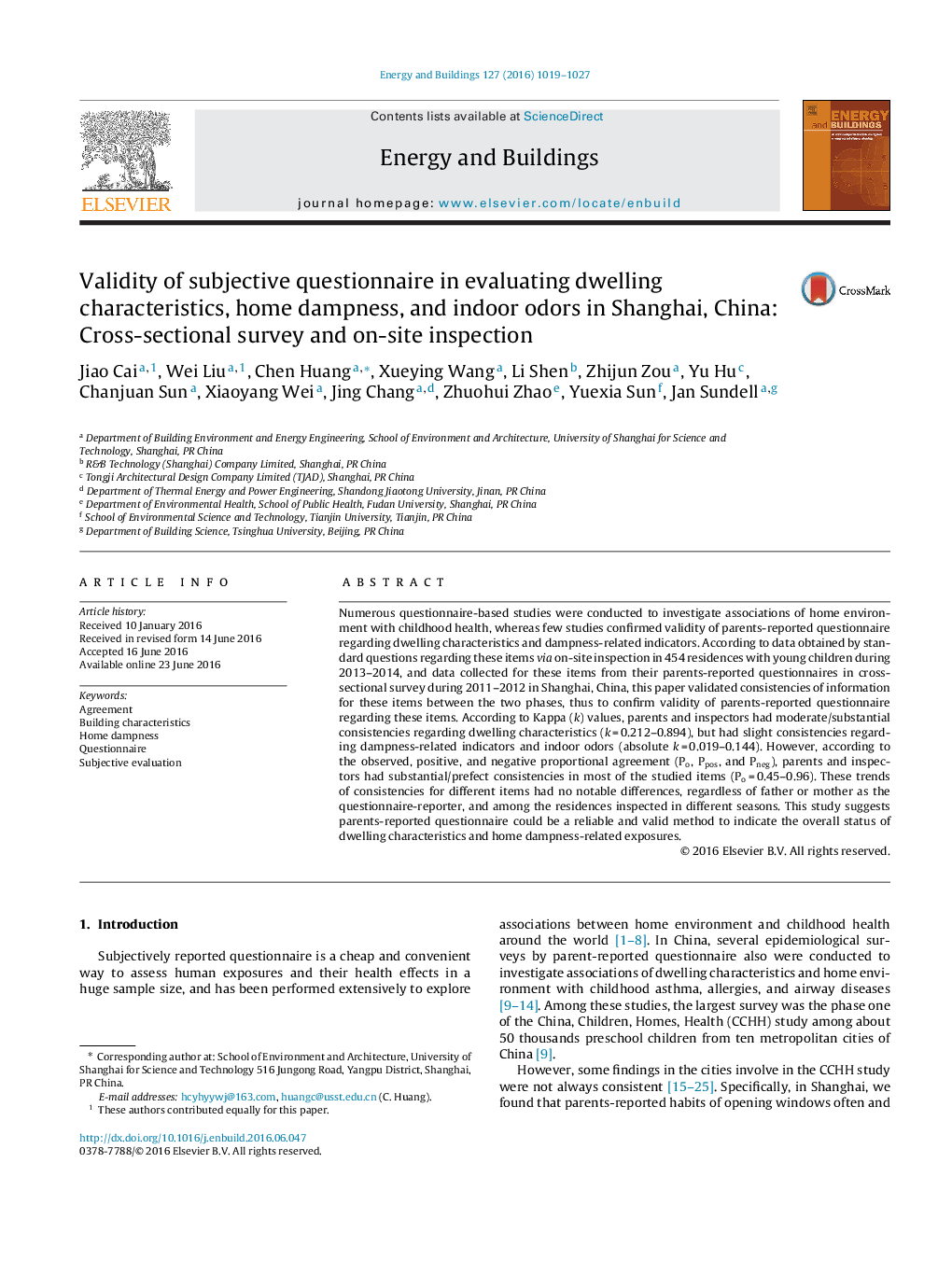| Article ID | Journal | Published Year | Pages | File Type |
|---|---|---|---|---|
| 262044 | Energy and Buildings | 2016 | 9 Pages |
•We validated agreement for dwelling factors, damp and odors among reporters.•Parents and inspectors had good consistencies regarding dwelling characteristics.•Parents and inspectors had slight consistencies regarding damp and indoor odors.•Consistencies had little differences for father or mother as questionnaire-reporter.•Consistencies had little differences for residences inspected in different seasons.
Numerous questionnaire-based studies were conducted to investigate associations of home environment with childhood health, whereas few studies confirmed validity of parents-reported questionnaire regarding dwelling characteristics and dampness-related indicators. According to data obtained by standard questions regarding these items via on-site inspection in 454 residences with young children during 2013–2014, and data collected for these items from their parents-reported questionnaires in cross-sectional survey during 2011–2012 in Shanghai, China, this paper validated consistencies of information for these items between the two phases, thus to confirm validity of parents-reported questionnaire regarding these items. According to Kappa (k) values, parents and inspectors had moderate/substantial consistencies regarding dwelling characteristics (k = 0.212–0.894), but had slight consistencies regarding dampness-related indicators and indoor odors (absolute k = 0.019–0.144). However, according to the observed, positive, and negative proportional agreement (Po, Ppos, and Pneg), parents and inspectors had substantial/prefect consistencies in most of the studied items (Po = 0.45–0.96). These trends of consistencies for different items had no notable differences, regardless of father or mother as the questionnaire-reporter, and among the residences inspected in different seasons. This study suggests parents-reported questionnaire could be a reliable and valid method to indicate the overall status of dwelling characteristics and home dampness-related exposures.
